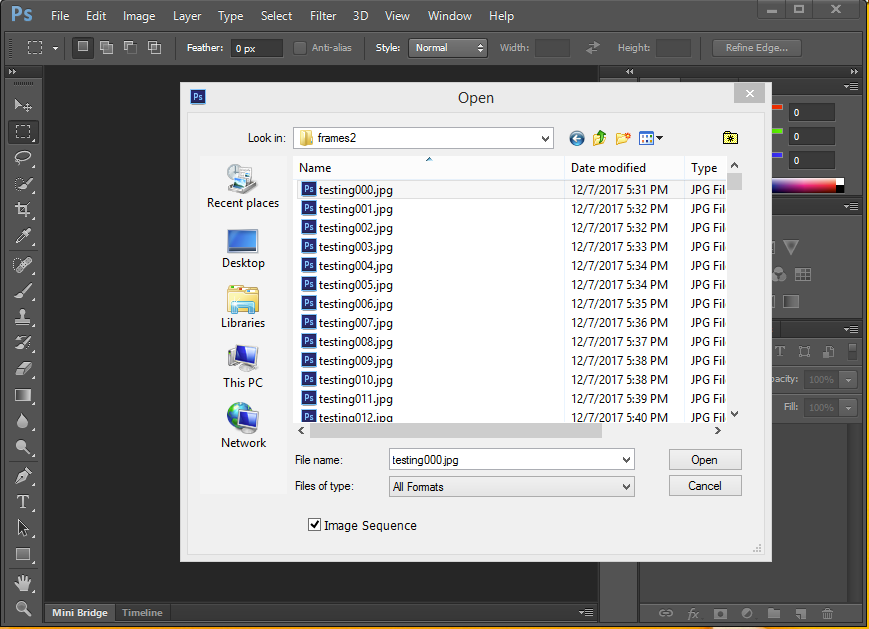
August, 2019 Workshop 2 Notes
Lighting and NURBS Surfaces
PART I: LIGHTING
Create a simple Nurbs sphere from the "Surfaces" shelf tool.
Add spot light
Go into lighting mode by hitting #7 key
With the spot light selected, to the top of the screen menu item "Modify/Transformation Tools/Show Manipulator Tool"
Move the source of the spot light above and to the right of the sphere, and move the target of the spot light to an area just below the sphere.
With the spot light selected, open the attributes editor (third icon from upper right-hand corner of Maya window) and resize the "cone angle" until it visibly impacts sphere
Within the attributes editor, turn on ray-trace shadows for the spot light.
Add two point source lights without shadows for fill and back-fill light
Use Show manipulator tool to reposition the point lights (target and source)
PART II: NURBS SURFACES
1. SURFACE OF REVOLUTION
Goto Front View
Create/CP Curve tool
Goto Perspective View
Surfaces/Revolve – select control box, pick “Y” axis, and # degrees.
CV Curve-Tool (control vertex NURBS curve) – perhaps more replicable due to less idiosyncratic control points. (higher degree is smoother --- largest exponent in polynomial equation used to represent the curve)
EP Curve Tool (free-hand pencil NURBS curve – 1 degree creates polygon straight lines)
2. LOFTING A SURFACE
Go to elevation view
Create two CV Curves in elelvation
Goto Perspective view
Move one curve along Y axis.
Pre-select both curves
Surfaces/loft – select control box – increase section spans to 5 – apply to curves
De-select geometry
Select curve
Move curve (transforms surface associated with it)
Right-click on curve and select control vertex
Isolate control vertex with selection tool [note gravitational pull on curves]
Move curve vertex with mouse and surface automatically updates.
3. MODIFYING A PLANAR SURFACE
Create/Nurbs Primitives/Plane
Stretch the plane.
Change the number of divisions in the channels box (30 x 30)
Right-click on plan and select control-vertex
Use selection tool to select a control-vertex or several of them.
Use the move tool to move them thereby reshaping surface
[Optional: Key frame Control Vertices directly in two locations at two frame numbers for animation]
4. PROJECTING CURVE ON A SURFACE
Create a surface of revolution (or use one from part 1 above)
Goto Front View Create a straight edge (EP Curve from two points)
Edit Nurbs/Project Curve on Surface (- select control box, use View direction –
Edit Nurbs/Trim Tool - select surface, select part to delete
5. SCULPTING A FLAT SURFACE [SKIPPED THIS EXAMPLE IN WORKSHOP]
Create/NURBS PRIMITIVES/Plane
Select Edit NURBS Sculpt tools with box.
Hit “reset” button to set all parameters to standard default values.
Draw on Surface
Hold “b” key to reset size
Change maximum displacement option
6. SETUP FOR SCULPTING A NURBS SPHERE
Create/NURBS PRIMITIVES/Sphere
Select #3 to increase density of mesh
INCREASE DENSITY OF SURFACE
Technique 1.
Select channels box for sphere.
Increase “sections” and “spans” to increase number of CVs (under MakeNurbSphere1)
Technique 2
Select Edit NURBS – Rebuild Surfaces []
Set number of spans u – 30
Set number of spans v – 30
Click rebuild
From left side of application window, open hypershade/perspective view of model (creates two view windows side by side).
Select blinn1 shader, change color to pink
Apply pink color to sphere
Set eccentricity to 0 to create strong highlight
Space-bar on perspective window to revert back to single perspective view.
7. BEGIN SCULPTING NURBS SPHERE
Select Edit NURBS Sculpt tools with box.
Hit “reset” button.
Under stamp profile: Set Radius(U) to 0.3
Under Sculpt variables: Set Max Displacement to 0.8
Mouse over surface, arrow indicates magnitude of displacement
Click and drag mouse on surface to begin sculpting it.
CHANGE DISPLAY TO SHADER (#5 KEY)
Do a second sculpting stroke and note simplicity of seeing result.
SCULPTING TOOLS
Select pull tool: pull on other side of ball
Select smooth tool; chance Radius (U) to 0.6 : smooth areas of ball
Select erase tool; erase some areas on ball
Hit flood button: erases all changes
Under stamp profile: Set Radius(U) to 0.5
Under Sculpt variables: Set Max Displacement to 0.5
Make two strokes over one another: each enhances effect until Maximum displacement is reached.
PART III: MOVIE EXPORT OPTIONS
Go to Setup in Render Globals
In Common Tab
Establish file type and extension (name#.jpg)
Determine numerical frame sequence to render
Image Size (default is 640 x 480 pixels).
In Maya Software Tab
Control Quality.
Turn on Raytracing
Edit project folder and note name of Image Folder (render)
PART IV_A: COMPILE IMAGES TO MOVIE FILE WITH FCHECK
To compile the images as a single movie file, the Maya utility named FCheck is used here. FCheck is included in Maya installation. The method illustrated here is based on the Apple Operating System.
Two alternative methods are indicated in PART IV_B, which uses Photoshop, and PART IV_C, which uses an open source program named Open Shot, are not required, but may be the better alternatives for Windows Operating System computers.
1. Go to the Autodesk / Maya Application Folder and select the utility FCheck.
2. Within the FCheck program, use the Menu sequence "File>Open Image Sequence".
3. With the "FCheck Info" dialog box, you may elect to set the "Playback Speed" to 0% so that that the images are not flickering on the screen.
4. Select Off "Every Frame" to reduce the apparent flicker and playback speed.
4. Use the menu sequence "File>Save As Movie" to save the image sequence as a "Quictime Movie".
PART IV_B: COMPILE IMAGES TO MOVIE FILE WITH PHOTOSHOP
1. Launch the Photoshop software. Use the Photoshop menu to Open the first image of the image frame sequence and with the open file diagog box selected the check-box for “Image Sequence”.

2. Set the frame rate, such as 30 frames per second in the dialog box that follows.

3. Open the timeline tab at the bottom of Photobhop and the video track will appear just below with standard play icons.
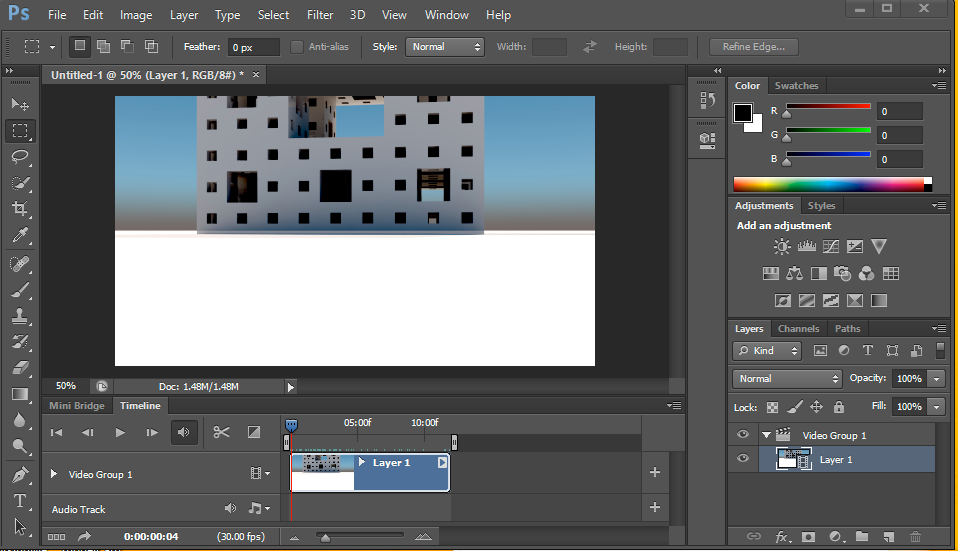
4. Optionally, continue to import frame sequences in Photoshop as separate image files
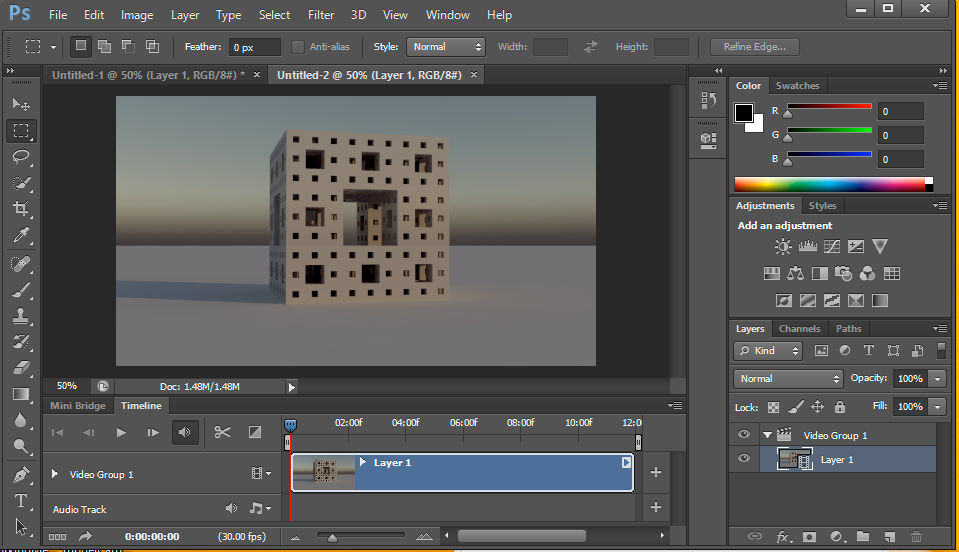
5. Chose “Video Group 1” on the left of the video track, and then the Photoshop the menu item sequence “Select/Select All”, to copy the track.
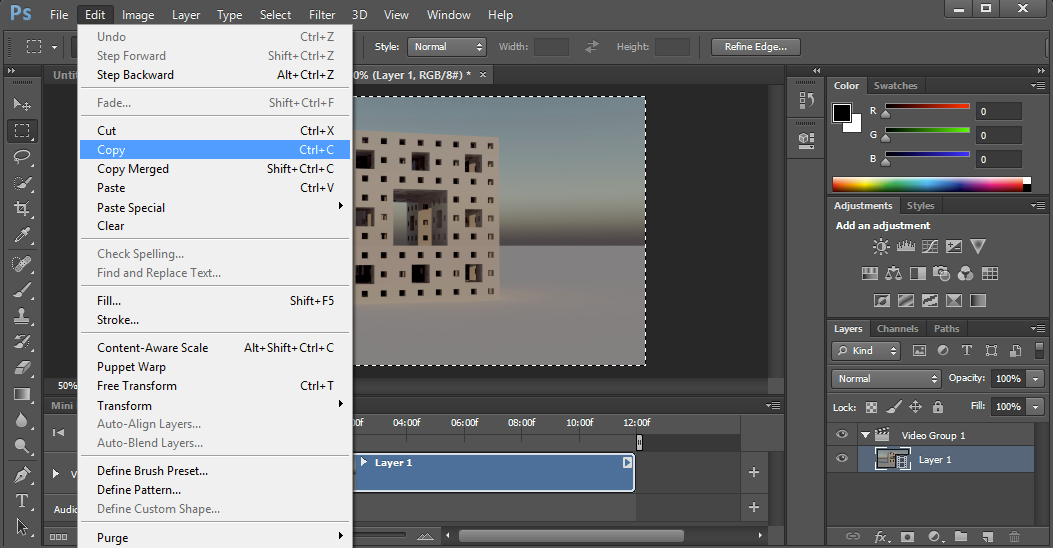
6. Use the Photoshop menu “Edit/Paste” the second video track onto the right side of the first video track used for the first import sequence in order to created the two videos in sequence. Repeat this process for any additional sequences you wish to add to the video track.
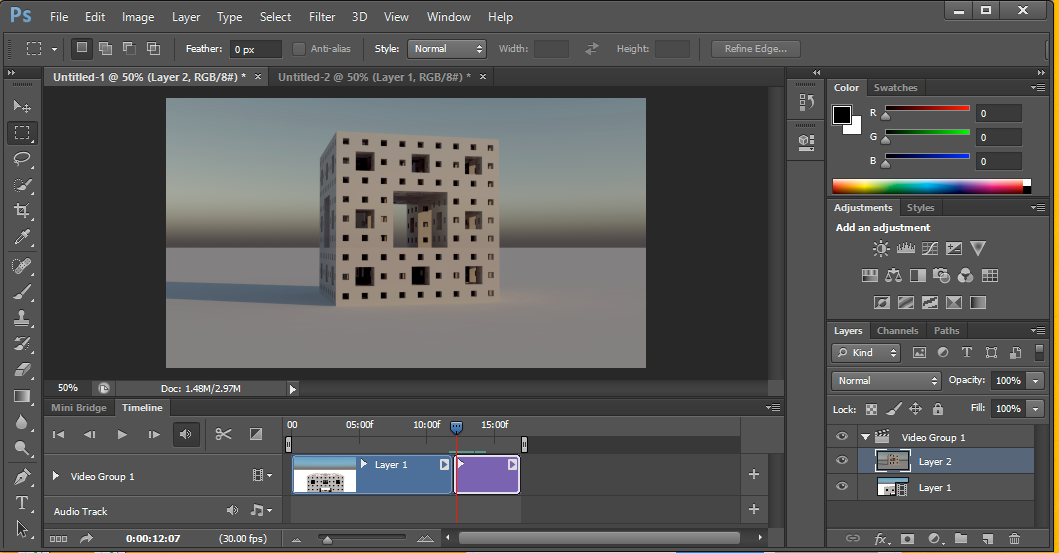
7. Use the menu item :File/Export/Rendered” to render video to a single file “mp4” video movie format (or alternative format).
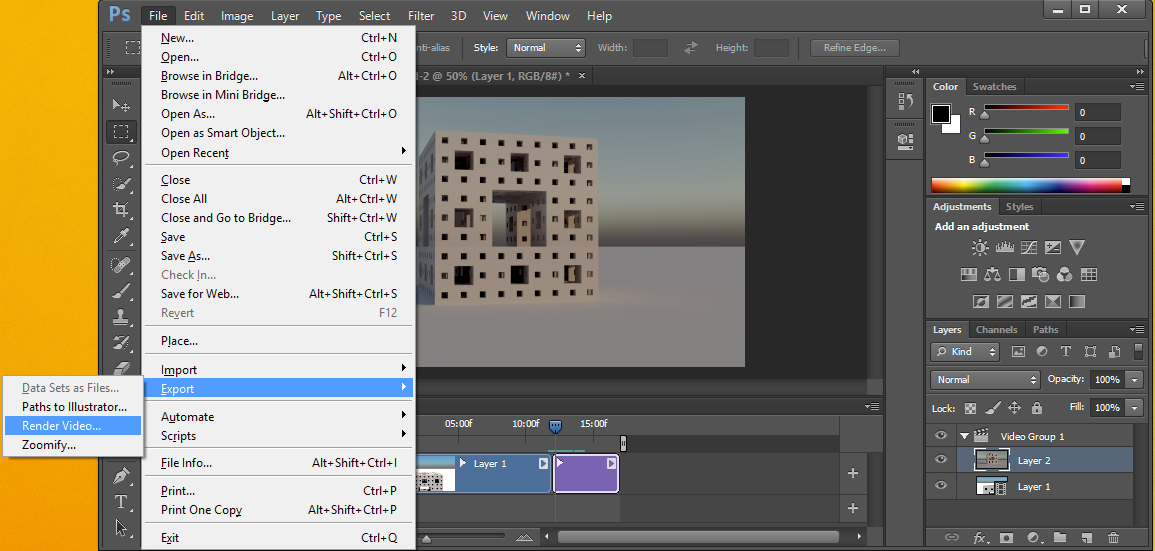
8. With the file formatting dialog box that appears, select the export location folder and choose a filename with the “mp4” format extension. The other presets in the “Render Video” below are recommended, including Format “H.264” and the Present “High Quality”. The Document Size of “960 x 540” should be the same resolution as the original renderings. Select the “Render” button in the right hand corner to compile the “mp4” video. A “Progress” window will graphically display the progress towards completing the compilation.
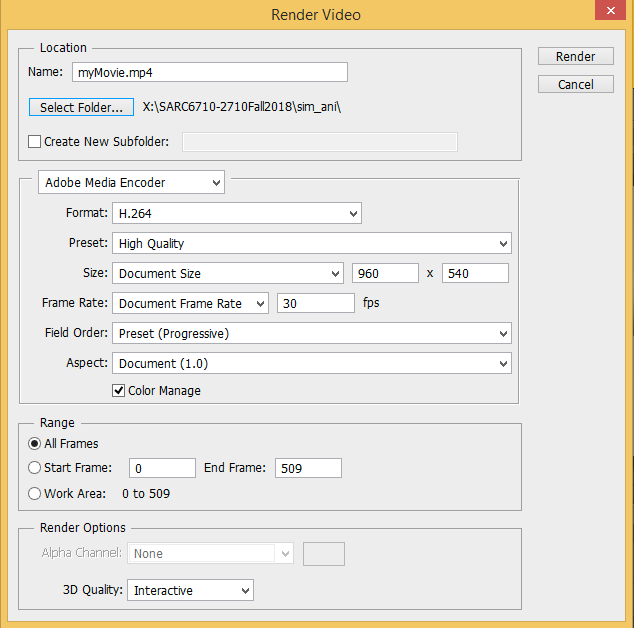
9. The video can now be viewed within any number of standard video players on Windows or Mac OS, such as the Windows VLC Player.
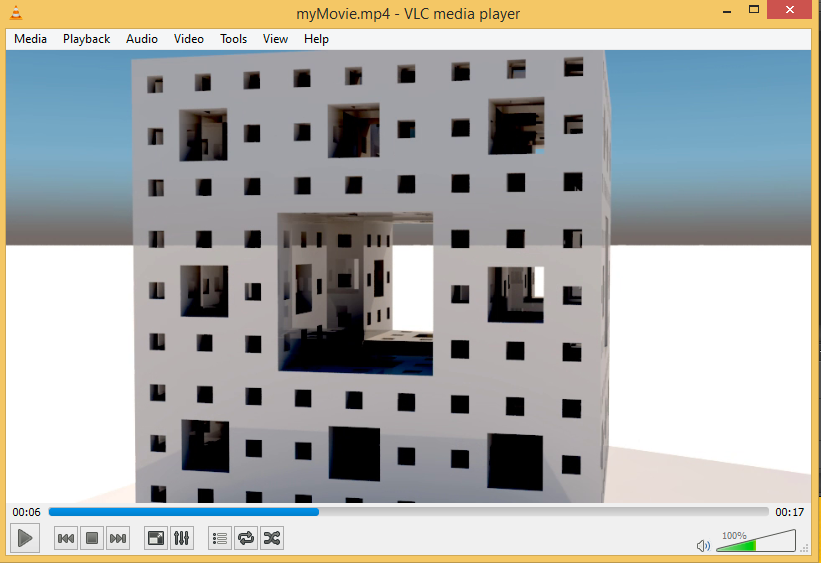
Note that other video editing options are available. Adobe Premiere is availalble on Windows OS in Campbell 105 and Campbell 107. Quicktime Pro is also available in these rooms on Mac OS. These tools are beyond the scope of this tutorial, but may be easier to work with for those already familiar with them.
PART IV_C: QUICKTIME EDITING (LEGACY APPLE AND WINDOW OS), FILE FORMATS, CODECS
These notes are for legacy Mac OS systems. See PART IV_A for a more current Mac OS method.
Go to Quicktime Pro, load individual frames at 30 fps and save to mov format (similar to workshop 1). (May not do this in workshop, depending upon time available.).
Quicktime Editing and Compiling. Workshop is based upon the following password protected * quicktime docs:
1. Import Image Sequence (p. 28)
2. Exporting Movie (p. 43 - 45)
3. Exporting to Mpeg 4 (p. 48)
* You can access these documents from any location on grounds or through VPN access through off grounds.